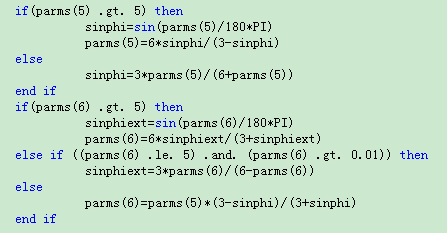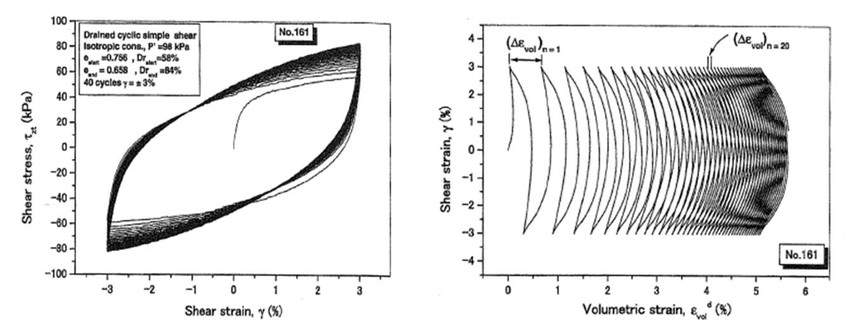Dear all
I have some laboratory test of Pescara sand and I’m trying to find the von Wolffersdorff parameters of this sand. So I have used ExCalibre with the data stored in the file labProtocol_S4C4.xlsx in this repository ( https://1drv.ms/f/s!AietkfmULY9CkeZL4VzKstrSmSxCmQ) . The curve of response are very good except in the prediction of volumetric strain. I’m not sure whether the parameters that ExCalibre suggest are good. I also have some doubts as to why the curve of response of triaxial drained test start in a different void ratio that I have specify in excel file. Is it possible that the initial void ratio specified in the OED-REC-1 B2 is not used in calculation ?
Thank you





Dear Francisco,
I checked your calibration and agree that ExCalibre calibration suppresses tendency to dilatancy. Void ratios have been updated, the reason is explained in excalibre output (next to the questionmark in the Parameters table) – text copied below. These was the best fit ExCalibre could reach using its optimisation technique, but you can adjust initial void ratios to the original ones and update parameters manually using recalculate feature to try to reach better fit.
Regards David
Text from excalibre help: Void ratios are often inconsistent between oedometric and triaxial tests, so that parameter ec0 calibrated using oedometric tests leads to incorrect predictions of dilatancy in drained shear tests when void ratios measured in triaxial tests are used. ExCalibre tried to optimise void ratio in relation to the calibrated ec0 value so that dilatancy is predicted correctly. This void ratio should be used as the initial one in geotechnical simulations. You may manually change it here to investigate its effect on model predictions.
Thanks for your kind reply
I am studying the response curves of this constitutive model and then I wrote an element Test to simulate the edometric and triaxial tests. Currently playing with the parameters I got the response curves shown in the figure (https://1drv.ms/b/s!AietkfmULY9CkegfOyCeBRQOmu2oiA). At the top there are the results of the triaxial drained test, in the lower left the ones of the edometric test in the plane e vs (log -T1) and at the bottom right the paths in the plane e vs log (-trT) recorded in the triaxial tests. With the parameters:
phi = 35.45 #[deg]
hs = 2.0825*10**5 #[kPa]
n = 0.405
ec0 = 0.985
ed0 = 0.82*ec0
ei0 = 1.15*ec0
alpha = 0.05
betha = 1.4
I think I was able to grasp the qualitative behavior, however I think I can get better result. In the calibration the ratios between ec0, ei0 and ed0 play a fundamental role, I konw that Herle and Gudehus (1999) suggest ei0 = 1, 2 ec0 and ed0 = 0, 5 ec0 but I thought to include them in the variable parameters in the optimization.
I would like to try to do a calibration using the Particle Swarm Optimization to see if this optimization algorithm can find best parameters.
Dear Francisco, thank you for your thoughts. Yes, in ExCalibre fixed ratio ei0/ec0/ed0 are used, any other ratio must be tried by user manually in recalculate feature. Thanks for the suggestion!